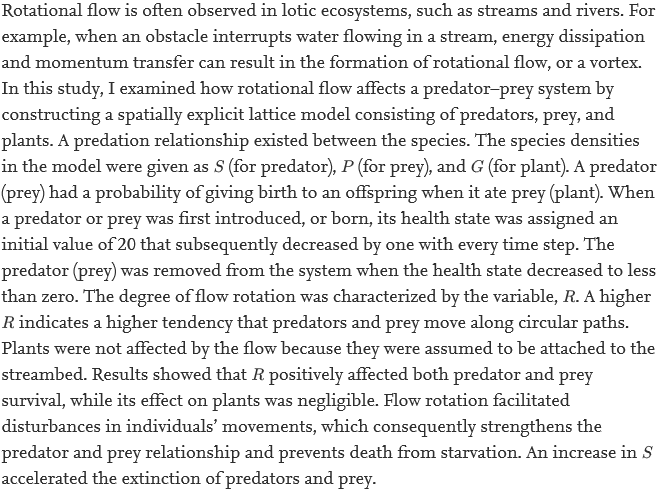논문
Han, K.; Kang, H.;Choi, M.Y.;Kim, J.;Lee, M.S. | PHYSICS LETTERS A 376 (2012)
The effect of public health interventions on the spread of influenza among cities
Lee, J.M.; Choi, D.;Cho, G.;Kim, Y. | JOURNAL OF THEORETICAL BIOLOGY 293 (2012)
Multiscale ensemble clustering for finding modules in complex networks
Eun-Youn Kim, Dong-Uk Hwang, and Tae-Wook Ko | PHYSICAL REVIEW E 85 (2012)
Analysis of the Responses of Termites to Tunnel Irregularity
Ku, S. J.; Jeon, W.;Su, N.-Y.Sang-Hee Lee | INSECTES SOCIAUX 59 (2012)
Effects of uniform rotational flow on predator-prey system
Sang-Hee Lee | PHYSICA A-STATISTICAL MECHANICS AND ITS APPLICATIONS 391 (2012)
Wonju Jeon (Sang-Hee Lee) | JOURNAL OF THE KOREAN PHYSICAL SOCIETY 61 (2012)
Characterizing temporal patterns in the swimming activity of Caenorhabditis elegans
YeontaekChoi (Wonju Jeon, Seung-Ho Kang, Sang-Hee Lee) | JOURNAL OF THE KOREAN PHYSICAL SOCIETY 60 (2012)
Seung-HoKang (Sang-Hee Lee, Tae-Soo Chon) | JOURNAL OF THE KOREAN PHYSICAL SOCIETY 60 (2012)
All-sky search for gravitational-wave bursts in the second joint LIGO-Virgo run
J. Abadie et al. (오정근) | Phys. Rev. D 85 (2012)
Search for Gravitational Waves from Intermediate Mass Binary Black Holes
J. Abadie et al. (오정근) | Phys. Rev. D 85 (2012)















